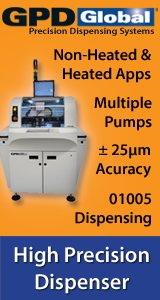First, look here [http://www.ti.com/lit/ug/snva500/snva500.pdf ] This is the actual pdf from TI, not some cheap-ass reproduction, like the link you gave us.
Orange polygons [and other shapes] - copper covered with ENIG * On the edge of the board, both sides - mate to edge connector * On the top-side - mount your components there
White polygons [and other shapes] - legend, silk screen
Blue colored area - soldermask
Little holes - via that connect the copper on the bottom to the copper on the top of the board.
Big holes - At the bottom of the bill of materials you'll see ...
EN 5014 Test Point Loop Yellow 1 Keystone VIN 5010 Test Point Loop Red 1 Keystone VOUT 5013 Test Point Loop Orange 1 Keystone GND 5011 Test Point Loop Black 2 Keystone
These test points are PTH components use to monitor your circuit to input voltage and ground, output voltage and ground and shutdown signal.
NOTE: We're talking about a 'demo board' here. In the industry, a demo board usually is something that the supplier [here TI] provides in order to make it easy for an engineer to evaluate a component. Now, I appreciate your interest in reverse engineering the board with a very nice CAD software as a project. Consider requesting a board from TI to use a baseline for your design and for making a first pass at making sure that the circuit runs.
PROBLEM: Moving forward with the information that you have in this application note presents problems. From the schematic, the component [L1] that we're talking about here has at least 5 connections. From the information at hand, you have no idea of the shape or location of these connections. Better get the datasheet [http://www.ti.com/product/lmr62014 ] Five connections in a SOT23. Pfew, that was easy.
BR, davef
reply »
![]() Hello,
I am a student and i am having problems with under...
- Jan 30, 2013
by
Vilius
Hello,
I am a student and i am having problems with under...
- Jan 30, 2013
by
Vilius
![]()
![]()
![]() First, look here [ ...
- Jan 30, 2013
by
davef
First, look here [ ...
- Jan 30, 2013
by
davef
![]()







